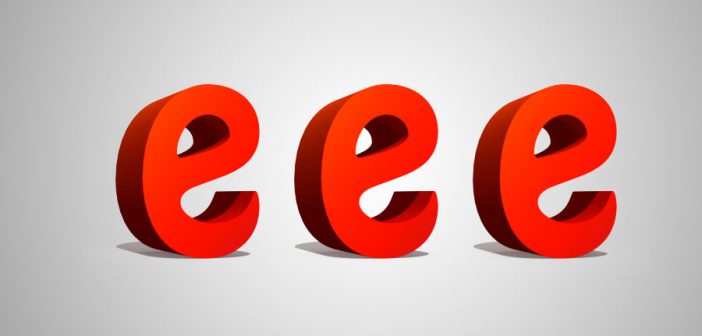I’m not an energy-drink person. The color and taste of the stuff kind of creeps me out; and, frankly, I don’t need any more energy than what I get from my morning coffees.
That said, there’s something I deeply admire about Red Bull. The company’s content marketing is legendary (and I’m a sucker for amazing content). I love what the brand has come to represent: A no-holds-barred approach to sensory stimulation, experiential exploration, and total comfort-zone destruction.
So, when Red Bull launched its famous Stratos Jump campaign in 2012, I was enthralled.
Again, I’ve never had more than a sip of Red Bull, and I doubt I’ll ever be a loyal customer, but I spent hours on the microsite that Red Bull created for Felix Baumgartner’s 128,000-foot stratospheric freefall. I shared it with anyone who’d listen. If you haven’t seen the jump, take a few minutes to check it out. I’m guessing it’ll leave you feeling confused (who’s crazy enough to do that?!)—and inspired.
In fact, just writing about it now has my blood flowing. If someone’s willing to leap from 128,000 feet or jump between two moving planes (another famous Red Bull stunt), then what am I doing sitting at a desk?! (Goes to Amazon, searches for “IronMan training book,” adds to cart.)
The Impact of Enablement, Enticement, and Enrichment on Brand Admiration
Again, I’m not—and won’t suddenly become—a big fan of Red Bull’s packaged goods. Still, I am a huge fan of the brand. I talk about it, write about it, and engage with it (primarily through Red Bull’s media property, Red Bull Media House). I can’t say whether that fandom has inspired others to buy an energy drink, but I can say that if Red Bull’s content team offered me a job, I’d take it in a heartbeat.
So how has Red Bull managed to turn a noncustomer like me into a passionate brand advocate?
According to a new book titled Brand Admiration: Building a Business People Love by branding experts C. Whan Park, Deborah MacInnis, and Andreas Eisingerich, it has a lot to do with purposeful branding that fosters three key feelings:
- Enablement, by delivering emotional experiences that provide functional pleasure and foster feelings of empowerment. Red Bull’s a great example, but so is the United States Marine Corps. For advocates of the Marines, the combination of the brand’s history, tradition, and exclusivity enables them through sense of purpose. They’re working with the Marines toward a greater cause and the gaining of something valuable in return.
- Enticement, by providing sensory or cognitive stimulation or creating experiences that warm the heart. Disney World is a perfect example of the latter. If you’ve taken kids to a Disney park and witnessed joy in its purest, most unadulterated form, you understand.
- Enrichment, by providing intangible pleasure or fostering feelings of inspiration. Under Armour’s “Rule Yourself” campaign—which featured inspirational videos and blog posts from some of the world’s biggest athletes—is a great example.
Enablement. Enticement. Enrichment. Those three E’s are the very foundation of brand admiration.
The brands that get them right aren’t interested only in selling a product. Rather, their strategies revolve around giving people exactly what they need (enablement), in a way that’s fun, interesting, or emotionally involving (enticement), all while making them feel good about themselves (enrichment).
How B2C and B2B Marketers Can Foster the 3 E’s
Though the examples in this article refer to business-to-consumer companies, it’s worth noting that enablement, enticement, and enrichment are also critical to building an admired B2B brand. Each plays a role in someone’s experience with a brand, and research suggests that “experience” plays a very big role in KPIs such as customer acquisition and employee retention.
Accordingly, it shouldn’t be surprising that a growing majority of B2B marketers is interested in optimizing this experience. One recent survey of senior marketers at 250 global B2B firms found that 58% are focused on what they call “value marketing”—the process of selling insight and experience, instead of product features or benefits. That’s a big increase over the 39% reported in the previous year’s study.
Now, for the million-dollar question: If these three E’s are so important for any brand in any industry, how exactly should they be fostered? Here are some tips to get you started:
- To enable your audience, focus on the things you can do to solve someone’s functional challenges by making them feel safe, conserving their resources, or empowering them to take action. Enablement might include enhancing product reliability and versatility, reducing mental and physical barriers, or creating opportunities to save time and money.
- To entice your audience, invest in activities that create experiential pleasure by tapping into someone’s sensory or cognitive senses. For marketers, this means investing in activities that evoke emotions, such as humor, empathy, or nostalgia. If you do that successfully, people will feel a deeper connection to your brand and they’ll want to engage with it more often.
- To enrich your audience, explore how your brand might enhance someone’s life in intangible ways. The easiest approach is to make it very clear how your values align with your audience’s aspirations. When people feel a deep sense of self-confirmation and social acceptance by associating with your brand, a direct link to brand advocacy and loyalty is created.
Of course, those tips only scratch the surface.
Brands like Red Bull, Virgin America, Amazon, and Caterpillar (and even smaller ones likeFreshBooks and Buffer) didn’t create admired brands by pulling a few levers or implementing a handful of “hacks.” Instead, their success was built on diligent, purposeful, and strategic focus on a fairly simple objective: Building a brand that people genuinely love, trust, and respect.
Judging by those companies’ growth and the admiration that people—customers, employees, partners, and fans—have for them, the rewards of those efforts have certainly justified the investment.
This article first appeared in www.marketingprofs.com


